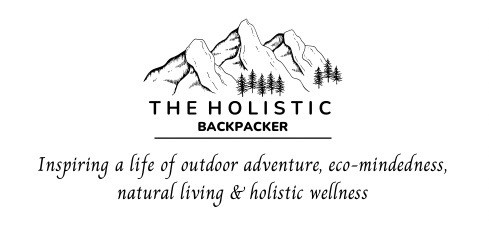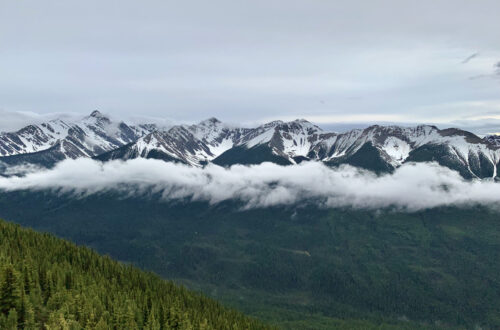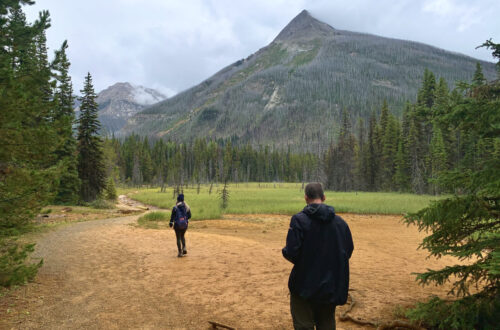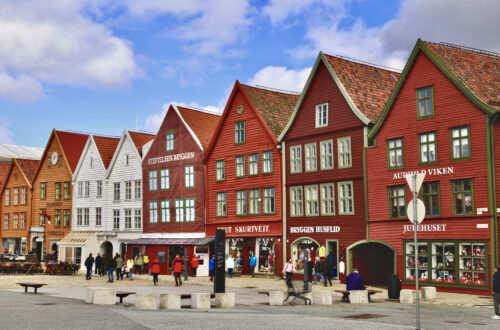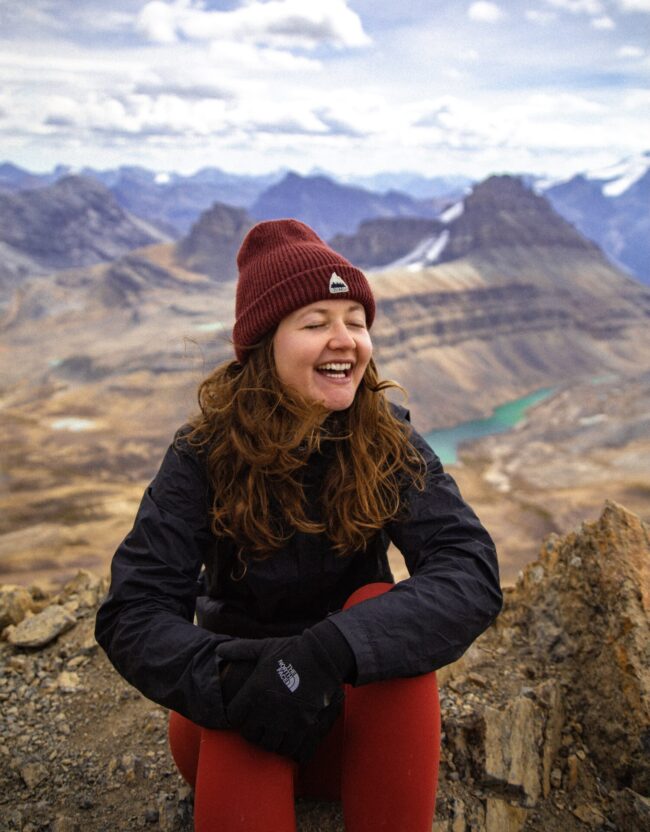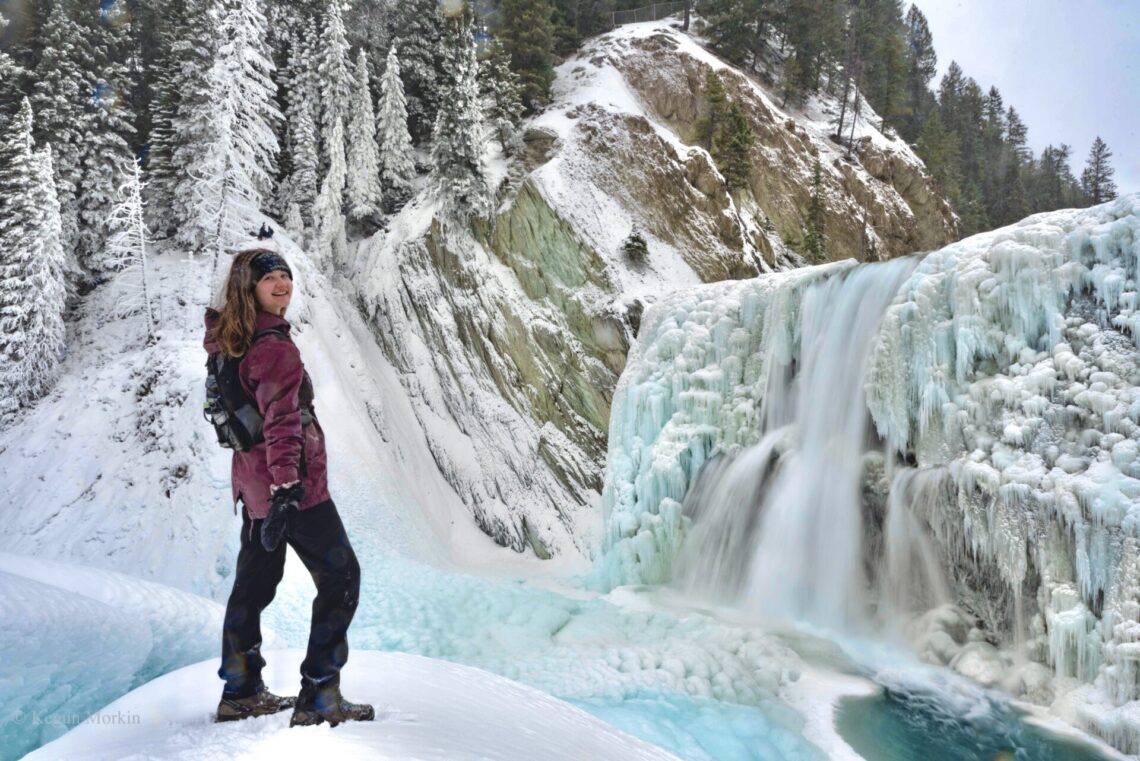
Hiking Wapta Falls in Winter – Yoho National Park
Hiking to Wapta Falls in winter is the perfect way to spend a chilly day in the Canadian Rockies. The Wapta Falls hike is in Yoho National Park which is close to Banff and features a gorgeous frozen waterfall.
Some other notable stops in Yoho you can make when you hike Wapta Falls this winter are the Natural Bridge, Morant’s Curve, and Emerald Lake.
Now, let’s go hiking!
Skip Ahead:
- How to get to Wapta Falls trailhead
- About Wapta Falls winter hike
- Hiking Wapta Falls in Winter
- Where to stay in Yoho
- Essential winter hiking gear
- What to wear for winter hiking
As you read this post, please consider clicking the links throughout. These are affiliate links which means when you book a hotel or purchase a product, I make a small commission at no additional cost to you (full disclosure). These commissions fund The Holistic Backpacker and help me write more blog posts.
Thank you for supporting my work!
How to get to Wapta Falls Trailhead
Wapta Falls is in Yoho National Park which is located approximately 1 hour and 15 minutes from Banff and half an hour from Golden.
The road leading to Wapta Falls is closed in the winter – you can check the Parks Canada page for more information regarding road closures.
There’s no shuttle that takes you to the Wapta Falls trailhead, so you’ll have to drive. If you don’t have a car you’ll need to rent one.
About Wapta Falls Winter Hike
- Distance: 4.8km (+3.6km in the winter)
- Elevation gain: 125m
- Rated: easy
- Type of trail: out & back
- Estimated time: 2hrs
The alternate Route to Wapta Falls Lookout via the South Loop is 4.5km with 140m gain. I didn’t hike this way, but the Alltrails reviews say you can’t hike down to the falls from this point. I imagine you might be able to find a way to hike over to the falls during winter because the river is frozen, but I can’t confirm whether this is true or not.
This trail is easy, well trafficked (moderately trafficked in winter) and easy to follow. During the winter months you’ll have to hike an extra 1.8km both ways due to a road closure. It’s totally worth the extra few kilometres though!
If you’re hiking Wapta Falls in winter I’d recommend waiting until mid January to hike to ensure the falls are frozen. This makes for much more dramatic scenery.
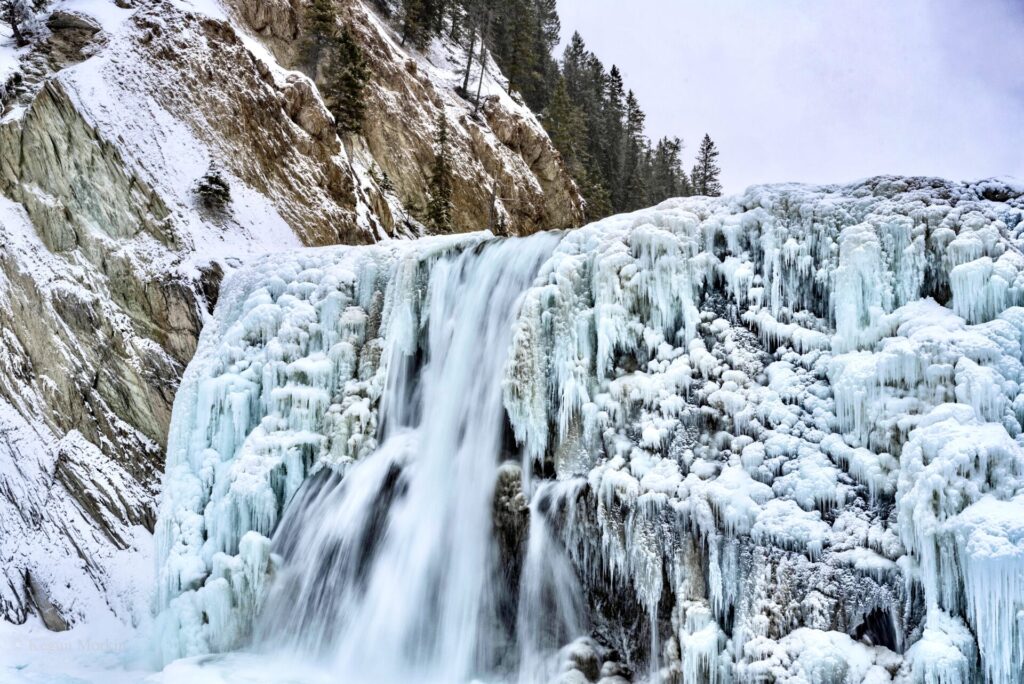
Hiking Wapta Falls in Winter
The Wapta Falls winter hike starts on a long road with no views. If you’re hiking after a fresh snowfall, I’d definitely recommend wearing snowshoes or cross country skiing to the Wapta Falls trailhead.
After hiking 1.8km down the road with some (minimal) elevation gain you’ll reach the actual trailhead which leads directly into the forest.
Connect via socials:
Sign up for emails to receive a 25% discount on my travel maps + occasional updates on new hiking guides & travel resources.
Taylor ♡
The Wapta Falls trail gently gains elevation via switchbacks. You may cross a few fallen logs/trees along the way, but for the most part the path is clear in winter. You can expect some roots in summer.
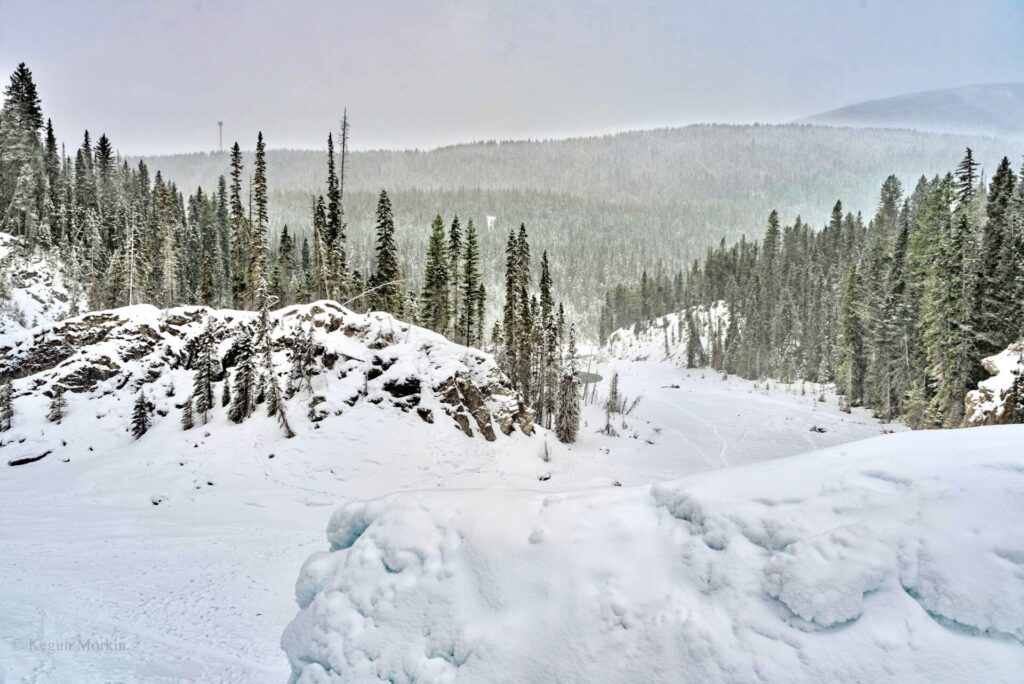
Wapta Falls Viewpoint
You’ll come to a viewpoint overlooking Wapta Falls. Hike down from here then up the small hill in front of Wapta Falls to get the full, unimpeded view of this frozen beauty. Be warned though – the hike down is very slippery! My brother hiked this trail with me and we were sliding all over the place. We had to hold onto trees to pull ourselves up and just slide down on our butts.
I’ll talk more about essential winter hiking gear and clothes next, but I’d recommend bringing micro-spikes on this hike for sure. They’re especially useful when you hike up close to the waterfall as the spray freezes all the snow.
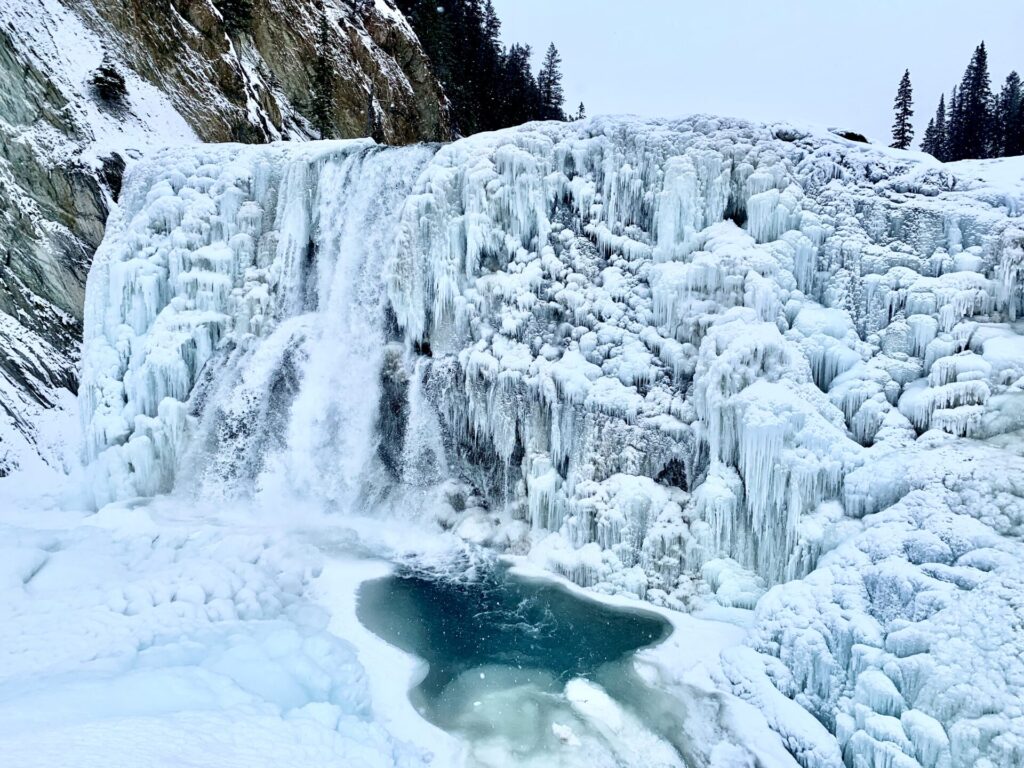
Wapta Falls in winter is by far the most scenic hikes in the snowy Canadian Rockies. If I could recommend one winter hike, it would surely be this one!
Where to Stay in Yoho
Booking.com- Hostels – HI Yoho Whiskey Jack Wilderness Hostel, Dreamcatcher Hostel (25 minute drive).
- Mid-range hotel – Canadian Rockies Inn (adults only).
- Luxury stay – Emerald Lake Lodge is an iconic hotel in the Rockies featuring a restaurant, bungalows, canoe rentals, and more. Cathedral Mountain Lodge is another gorgeous lodging option in Yoho where you’ll have the opportunity to stay in log cabins.
- Camp – reservation info.
- See all Yoho lodging options.
- See Golden lodging options (25 minutes away).
Looking for More Adventures in British Columbia?
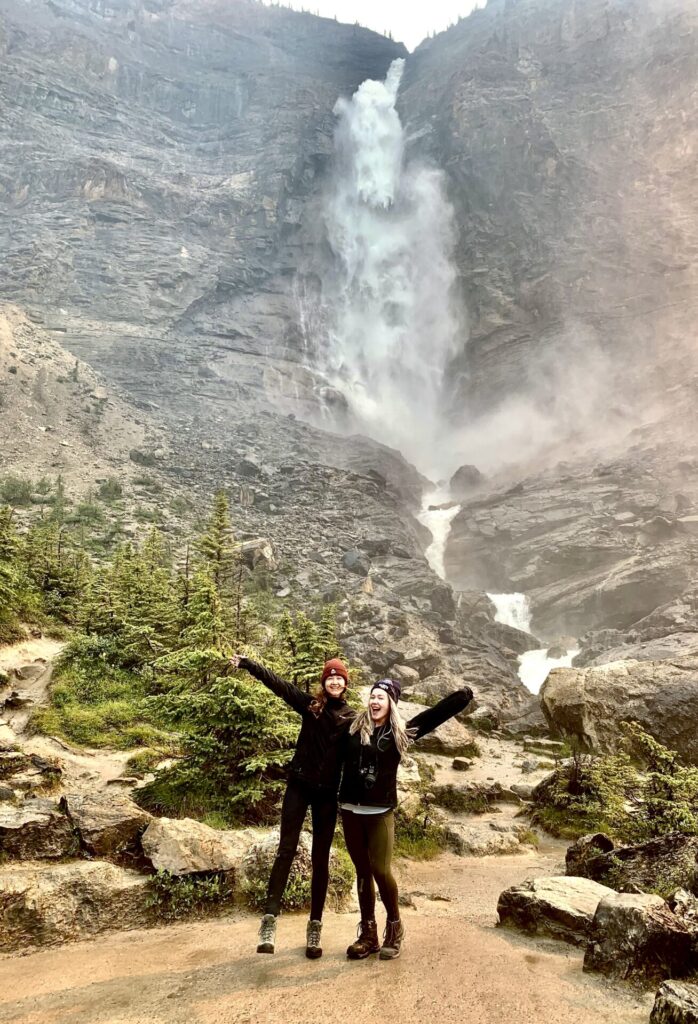
The Holistic Backpacker is full of hiking and travel resources for destinations all over the Canadian Rockies.
The following are a few of my personal favourites, but you can find all my BC guides here:
- How to spend 1 day in Yoho National Park
- Best ski resorts in British Columbia
- Paget Peak scramble
- Stanley Glacier hike
Explore Alberta
Alberta is British Columbia’s next door neighbour and is home to incredible National Parks and Wildland areas like Kananaskis Country, Banff National Park, Jasper National Park, Waterton National Park, etc.
You can find all my hiking guides and travel resources for Alberta here.
Happy adventuring!
Taylor ♡
Like This Post?
Share with friends or save it for later!
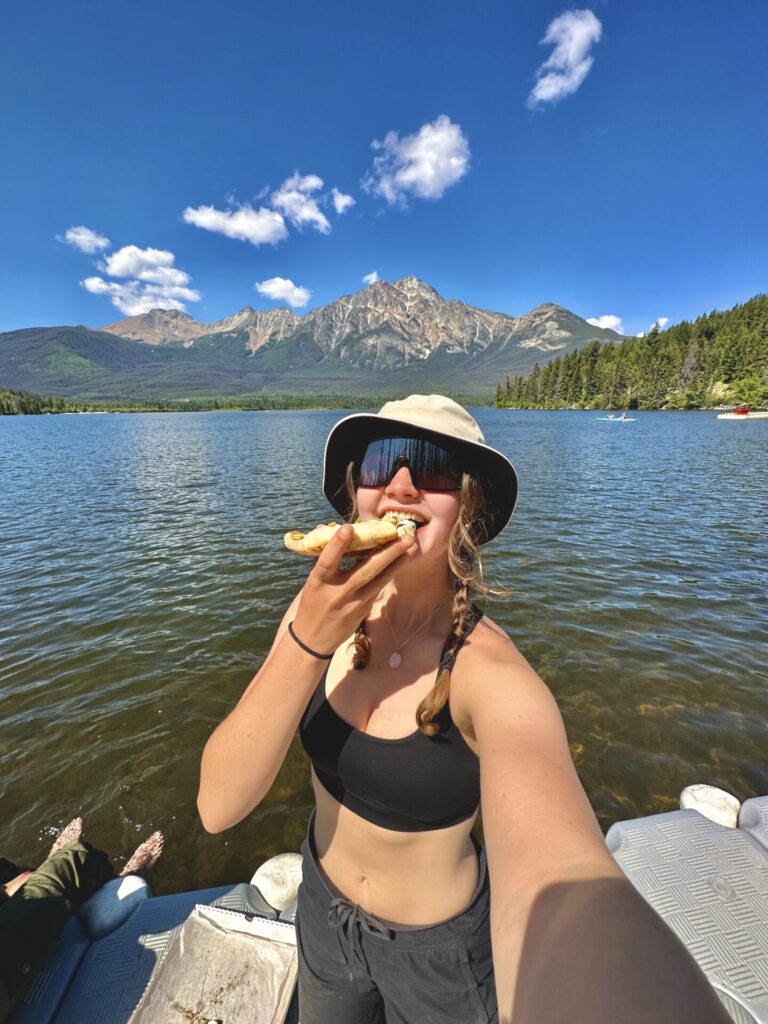
About The Author
HI, I’m Taylor – the voice behind The Holistic Backpacker.
After moving to Banff National Park in 2020 I became an outdoor adventure enthusiast and vowed to never stop exploring.
I now spend my days travelling the world, climbing mountains, and spending nights under the stars in the Canadian Rockies backcountry.
I created The Holistic Backpacker so I could share my adventures and help connect people like you with the same amazing experiences.


